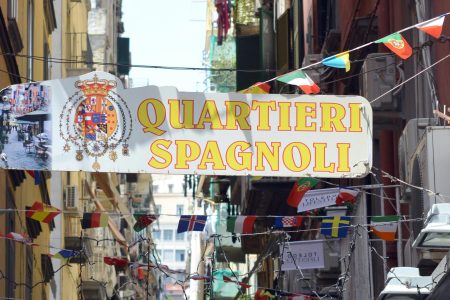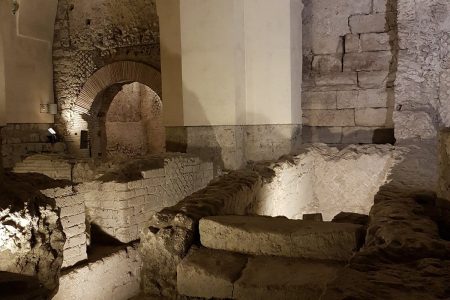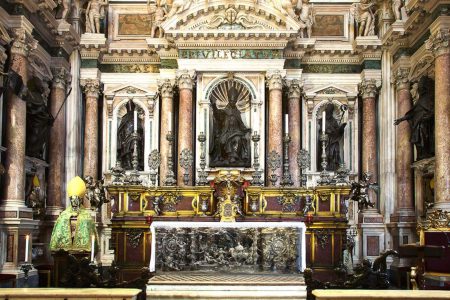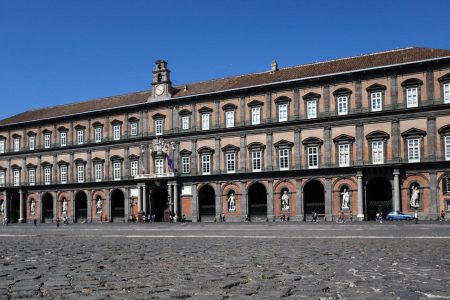Table of Contents
Christmas is almost here, and our country has developed different customs and traditions depending on the region. In this sense, Campania and especially Naples is no exception. In the Neapolitan capital, Christmas has always been a holiday that is very much felt by the population as it is the time of year when families finally get together and can reunite.
In fact, Neapolitans are particularly attached to their traditions, and during this period there are many little rituals to observe, and some things can never be missing in the home. Whether they are decorations, typical dishes, party games or something else, Christmas in Naples is always a riot of excess and lots of fun. So let's see what are the 5 must-haves that absolutely cannot be missing in Neapolitan homes.
The crib
The heart of Neapolitan Christmas is certainly the nativity scene. Conceived around the 18th century, it is still one of the indispensable elements for all homes in Naples. Many families have maintained the habit of building it by hand, piece by piece, buying only the shepherds To be placed on top. It is usually prepared and displayed by December 8, the Feast of the Immaculate Conception, and put away on January 6.
In fact, until December 24, the crib must remain incomplete because. Baby Jesus should be placed in the manger only at the stroke of midnight. However, there are those who prefer to put it already in the cradle and cover it with a handkerchief while waiting for December 25.
You might be interested
Walking tour in the Spanish Quarters to breathe in the magic of Naples
per person Book
Admission ticket to the Neapolis Sotterrata and the Basilica of San Lorenzo Maggiore
per person Book
The Museum of the Treasure of San Gennaro and the Royal Chapel in Naples (entrance fee)
per person Book
Private guided tour of the Royal Palace of Naples
per person Book
Codfish, reinforcement salad and eel capiton
One of the unmissable dishes for a self-respecting Neapolitan Christmas dinner is baccalà, or salt cod, which is the salted codfish prince of many recipes of Neapolitan gastronomy. Neapolitans generally go to buy this fish on the night between December 23 and 24. As an accompaniment there will be thereinforcement salad, prepared with boiled cauliflower, green olives and pickles. In the past it served precisely to "strengthen the stomach on the lean day that was supposed to be Christmas Eve.
Equally important is then the eel, the female eel, which is usually sliced into pieces and fried in boiling oil. The custom of eel on the eve comes from the fact that it is reminiscent of a snake, which, in the Bible, is a depiction of the devil. So killing and eating this fish symbolically represents the defeat of evil.
Struffoli, roccocò and mostaccioli
Traditional Neapolitan Christmas sweets can never be absent from the table. One of the most popular are the struffoli, also widespread in central and southern Italy under other names. They are balls of sweet dough fried and dipped in honey. They are then sprinkled with colored confettini, citron and candied cherries to add a touch of color.
I mostaccioli, on the other hand, are cocoa cookies with a spicy, semi-hard dough covered with lots of dark chocolate. In some versions they can also be flavored with rum or Strega liqueur. Finally, at Christmas you can enjoy the rococo, doughnut-shaped cookies made with almonds, flour, sugar, honey, candied fruit and pisto (a mixture of spices).
The raffle
Once the Christmas dinner is over, all that remains is to play bingo! Perfect for adults and children alike, it is the game that has always brought families together for fun. Tombola has very ancient roots and is a direct descendant of the game of Lot which in the 18th century was a favorite pastime in Naples.
To play, simply pull out the 90 numbers from the basket, which participants must then cover on their folders with beans or dried fruit. Each number then is associated with a meaning from the Neapolitan Smorfia. In short, tombola is always a time of great merriment and laughter.
The ciociole
At the conclusion of the Christmas meals on the table always comes the time for the so-called "bowls," that is, the dried fruit. It is that stage when, after eating, the family chats and munches on dried figs, walnuts, pistachios, caramelized hazelnuts, dates and more.
According to tradition, it is at such a time that our dear departed join the table. In fact, several folk legends tell that dried fruit is the only food that the dead can eat. For this reason, it is good to leave a basket with pebbles on the table even after eating to allow the deceased to participate in Christmas celebrations with the family.





0 Comments